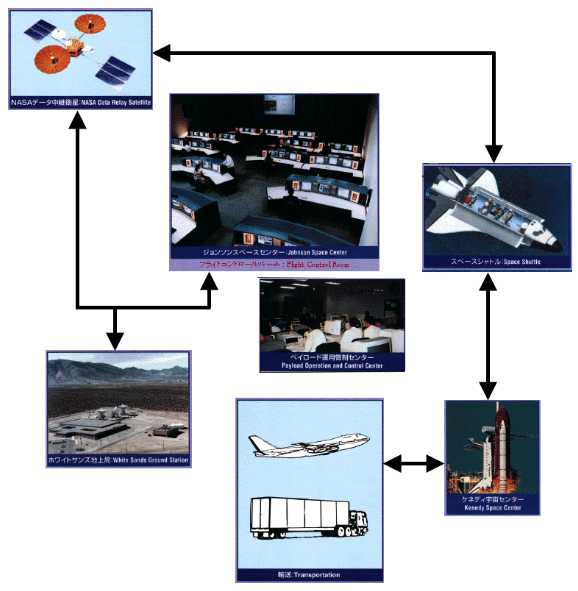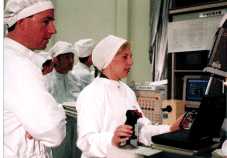|
|||||
 |
 |
After that, control performance of the unloaded Robot Arm will be confirmed, and functions of ORU detachment and attachment, and door opening/closing will be demonstrated. The control performance of the loaded Robot Arm, that is, the Robot Arm with the ORU, will be then confirmed. On flight day 7, four hours of ground commanding experiments are scheduled. The crew will switch the Arm control mode to the ground commanding mode, and hand over the control authority to the ground. Only free space motion of an unloaded Robot Arm will be performed. Video data from on board cameras during the MFD flight operations including the ground commanding experiments will be recorded by video recorders of the Shuttle. One channel of the video data will be downlinked to the ground in real time. In addition, telemetry data will be downlinked to the ground via Shuttle equipment and will be used for flight operations control commanding experiments.
The Material Sample Holder of the Atomic Oxygen Exposure Experiment of the ESEM will be exposed to the space environment while the payload bay doors are open. The Cosmic Dust Collector will be faced to the orbiter velocity direction for a total of 40 hours to collect cosmic dust. Neither ESEM experiments require crew operation.
A maximum of eight experiment runs are scheduled for TPFLEX. Crew operations of the TPFLEX are limited to activating the system and setting experiment parameters, and the experiment itself is performed automatically. Each experiment run takes approximately 60 minutes, followed by 8-hours of cool down per experiment run. TPFLEX and MFD Robot Arm operations will not be conducted simultaneously.



|